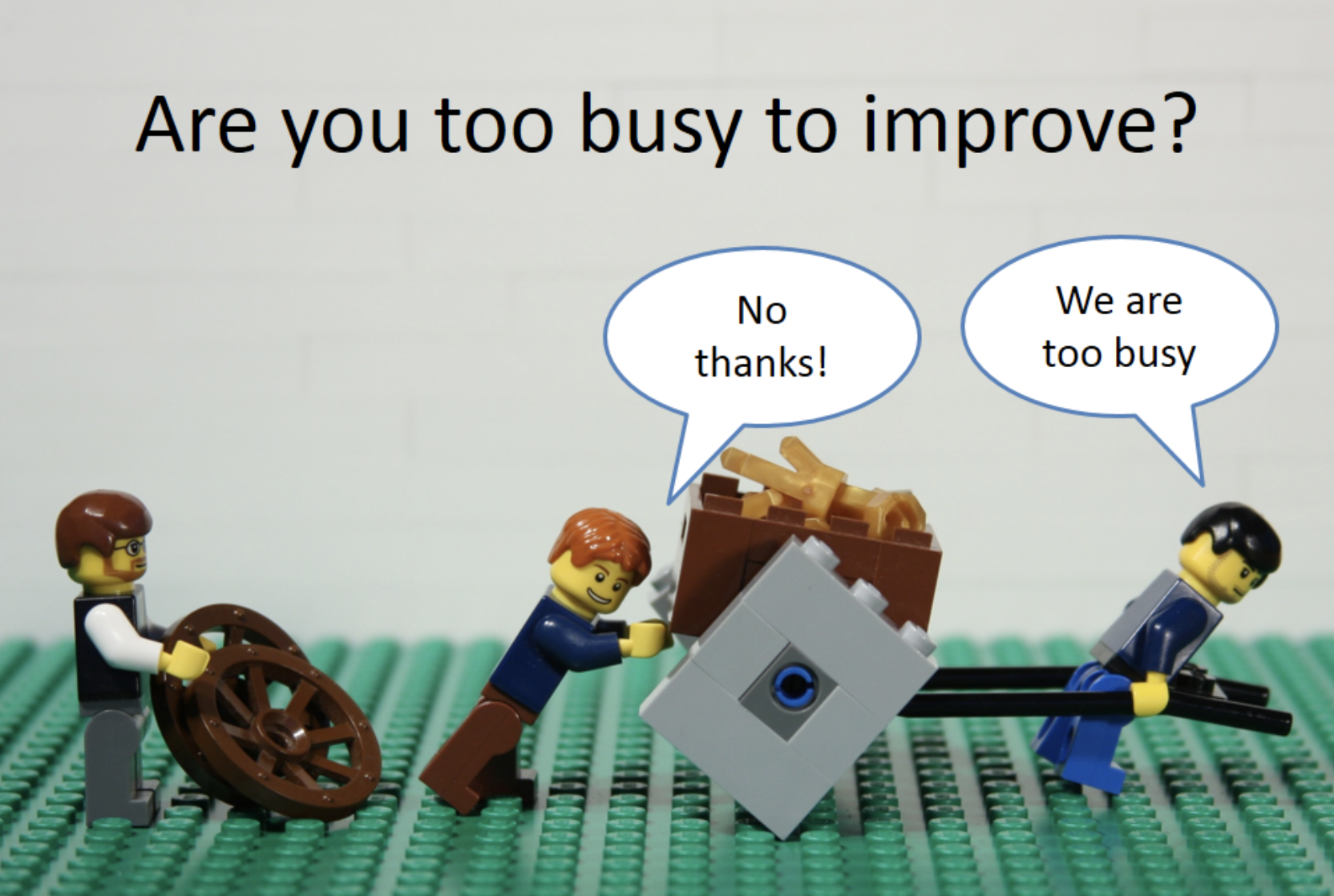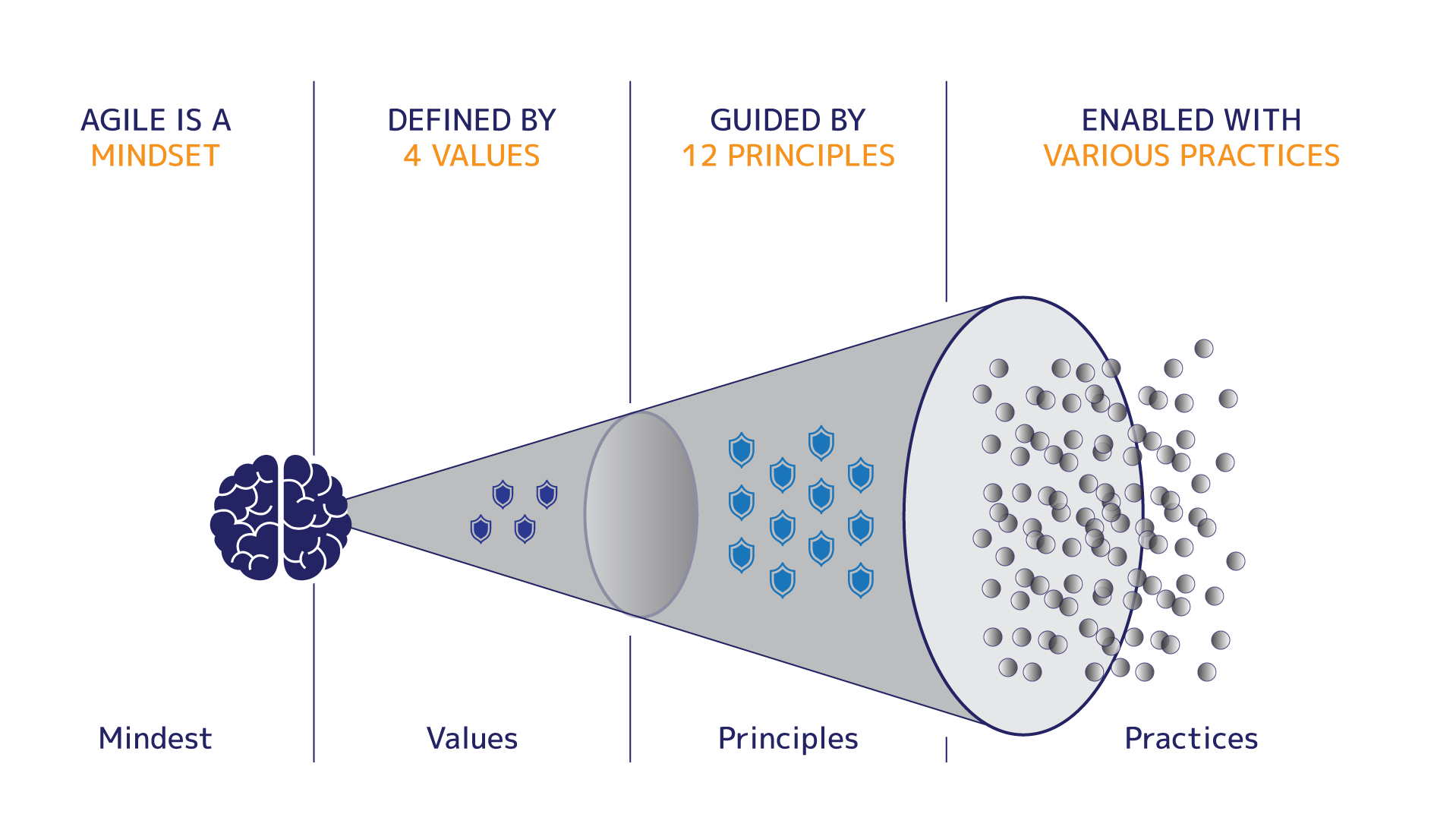The agile mindset is about adding value from the outset and working collaboratively with others by sharing the same common goal and using a continuous improvement process (inspection, adaptation, and transparency).
Ultimately, Agile is a mindset informed by the Agile Manifesto’s values and principles. Those values and principles provide guidance on how to create and respond to change and how to deal with uncertainty.
You could say that the first sentence of the Agile Manifesto encapsulates the whole idea: “We are uncovering better ways of developing software by doing it and helping others do it.”
When you face uncertainty, try something you think might work, get feedback, and adjust accordingly.
Agile Manifesto
We are uncovering better ways of developing software by doing it and helping others do it. Through this work we have come to value:
-
Individuals and interactions over processes and tools Having the right group of individuals on your software team is vital to success. The best possible tools in the wrong hands are worthless. Perhaps even more important is how these individuals communicate with each other. The interactions between team members are what help them to collaborate and solve any problems that arise.
-
Working software over comprehensive documentation Shipping software to customers is one of the highest priorities. You can then gather feedback to help you improve future releases.
-
Customer collaboration over contract negotiation The focus is on continuous development. You need to build a feedback loop with your customers so that you can constantly ensure that your product works for them.
-
Responding to change over following a plan A software team should have the ability to pivot and change direction whenever they need to, with a flexible roadmap that reflects that. A dynamic roadmap can change from quarter to quarter, sometimes even month to month, and agile teams can keep up with those changes.
12 Principles
In our daily work we use principles as follows:
-
Our highest priority is to satisfy the customer through early and continuous delivery of valuable software.
-
Welcome changing requirements, even late in development. Agile processes harness change for the customer’s competitive advantage.
-
Deliver working software frequently, from a couple of weeks to a couple of months, with a preference for the shorter timescale.
-
Business people and developers must work together daily throughout the project.
-
Build projects around motivated individuals. Give them the environment and support they need, and trust them to get the job done.
-
The most efficient and effective method of conveying information to and within a development team is face-to-face conversation.
-
Working software is the primary measure of progress.
-
Agile processes promote sustainable development. The sponsors, developers, and users should be able to maintain a constant pace indefinitely.
-
Continuous attention to technical excellence and good design enhances agility.
-
Simplicity–the art of maximizing the amount of work not done–is essential.
-
The best architectures, requirements, and designs emerge from self-organizing teams.
-
At regular intervals, the team reflects on how to become more effective, then tunes and adjusts its behavior accordingly.
Best practices
-
Iterative Development
Through Agile iterative development, bigger projects are broken down into smaller chunks. Through this practice, Agile teams get a perspective on new features that need to be added to the final product or service and contributes towards more flexible product development.
-
Creating a Product Backlog and Product Vision Together
A product backlog is an ordered list of items that are required to be added to the product development. A good practice for Scrum implementation is to create the product backlog and product vision together so that both the development team and stakeholders are on the same page. This ensures mutual understanding and helps in aligning the vision in a better way.
-
Setting Communication Guidelines for Teams
Uninterrupted communication is a key for the Scrum framework and can become a bottleneck if not tackled efficiently. An effective way to ensure seamless communication is to formulate a communication strategy with all the essential guidelines for teams. This particular practice can come in handy for remote teams as it will make team goals transparent.
-
Regular Meetings
Regular meetings are a key to Agile implementation. These meetings should be short and concise, with each member of the team explicitly stating the progress of tasks and what needs to be done. This practice is a great way to monitor the performance of the team and check if there are any obstacles in the way of product development
-
Using Professional Tools
Using project management tools for the implementation of Agile methodologies helps the team to better structure their workflows and improve team collaboration. For proper documentation and meetings management, a professional project management software can greatly reduce the effort it takes to manage your tasks otherwise.
-
Continuous Improvement
There is a constant need for improvements throughout the project development. One practice to achieve improvements is to clearly communicate the requirements and guidelines to team members for achieving more with minimal waste.
-
Small Releases
Working on a similar principle of iterations, this concept focuses on small releases throughout the lifecycle of product development. This particular practice helps the entire team in understanding how the product is coming along and identify any glitches that might occur during the product development cycle.
-
Simple Design
The simple design of software requires less time to write and takes minimum effort to fix problems. This practice also helps in cutting down the overall costs of developing a product and paves way for team members to always find an easier way to get things done.
So, as you can see, these Agile best practices are a rich array of options to choose from. The secret to adopting a "best" practice lies in understanding your business and team needs better and then addressing those needs accordingly.




 Cloud onboarding
Cloud onboarding